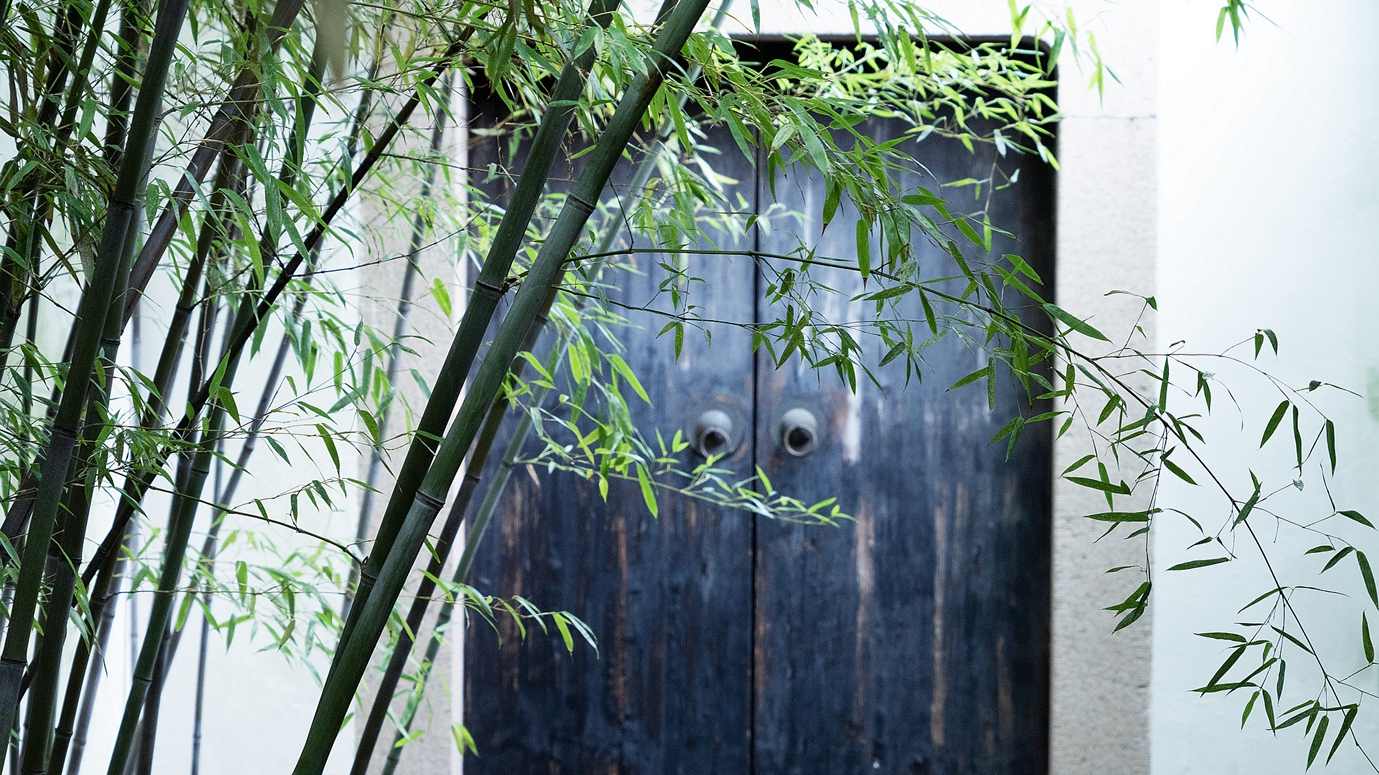
Humble Administrator's Garden in Suzhou, east China's Jiangsu Province. (Photos: VCG)
Rocks in distinct designs symbolize mountain ranges and towering peaks, small ponds or springs symbolize rivers and lakes – classical Chinese gardens present the larger world of nature in a microcosm, interpreting the harmony between man and nature.
Aside from exquisite architecture, sculptural rocks, and delicate water design, garden plants also embody some of the essential concepts and artistic methods of classical Chinese gardens.
Chinese garden designers approach plant materials from natural and spiritual perspectives, rather than from an interest in botanical specimens. They tend to select the plants that carry profound symbolic meanings in poetry and literature.

Plants and rocks are essential in classical Chinese gardening.
As Zhang Chao (1650-1707), a Chinese literatus and writer during the Qing Dynasty (1644-1911), wrote in his acclaimed essay collection "Quiet Dream Shadows":
"Planting flowers serves to invite butterflies, piling up rocks serves to invite clouds, planting pine trees serves to invite the wind… planting banana trees serves to invite the rain, and planting willow trees serves to invite cicadas."
Such traditional symbolic associations between plants and nature are at the very heart of classical Chinese gardening.
A messenger of nature
Trees and flowers are valued for attracting admiring glances in the garden during different seasons through their fragrance, color, shape, or acoustic properties, injecting vigor and vitality into the whole landscape.

Willow trees along the banks at the Old Summer Palace, also known as Yuanmingyuan, in Beijing.
Small trees and bushes are planted along with the paths of bluestone slates, representing vast or ancient forests. It also represents a special connection to the natural environment, where roads zigzag through the woods.
Some plants such as bamboo and pine are cultivated beside walls and windows. Playing with shade and light, they create dappled lighting effects on otherwise plain walls, displaying ever-changing pictures through windows as time goes by.
Plants like willow trees are commonly placed in conjunction with pools, springs and winding streams in gardens. Through their reflective interaction with the water features, they produce the visual illusion of a larger space.

Rain nurtures lotuses in a garden in Kunming, southwest China's Yunnan Province.
Garden plants show their associations with natural elements such as wind and rain. The willow is a perfect example here as it has been viewed as a messenger of the wind since ancient times.
When wind blows, the weeping willow leaves sway and present a phenomenon dubbed "willow waves," which are commonly depicted in Chinese poems and paintings. What's more, the willows are also frequently associated in many artworks with orioles and cicadas as they love to rest on the hanging branches.
Some plants with large leaves like the banana tree and lotus flower are placed in front of rooms or besides pavilions and bridges as they can "catch" the sound of rain while raindrops are drumming on their broad leaves.
A symbol of self

Plum blossoms in a garden in Suzhou, east China's Jiangsu Province.
Chinese garden designers rely on traditional plant selections to create a symbolic environment as many plants offer a variety of literary associations from poetry and paintings.
For instance, hailed as "messengers of spring," plum blossoms have greatly inspired countless poets and artists as well as classical Chinese garden designers. The not-withering plum blossom of the winter, also named wintersweet, stands for a strong spirit that could overcome any difficulties.
As a famous Chinese poem by Wang Anshi (1021-1086), a renowned poet and politician during the Song Dynasty (960-1279), reads: "At a wall corner some plum trees grow; Alone against cold white blossoms blow. Aloof one knows they aren't the snow; As faint through airsoft fragrances flow."

Traditional Chinese paintings feature the "Four Men of Noble Character" (L-R), plum, orchid, bamboo, and chrysanthemum. (Photo: Shenyang Place Museum)
Other trees and flowers – such as pines, cypresses, bamboo, lotus flowers, and chrysanthemum – are also admired by garden occupants, and often chosen for their noble moral implications.
The plum is known as one of the "Three Friends of Winter," jointly ranked with the pine and the bamboo as they are evergreens.
The bamboo, which bends in the wind and does not break, is universally considered as the emblem of an honorable man. Along with orchid and chrysanthemum – the former represents a true gentleman for its subtle scent while the later symbolizes humility – as well as the plum, they are hailed as the "Four Men of Noble Character."

Bamboo is commonly seen in classical Chinese gardens.
Chrysanthemum is also regarded as an epitome of reclusive spirits in China thanks to famous poet Tao Yuanming from the Eastern Jin Dynasty (317-420). In one of his most well-known poems, he wrote: "While picking up chrysanthemums beneath the eastern fence, my gaze was leisurely upon the southern mountains," which describes a peaceful and fulfilling life that many dream of.
Showcasing poetic and artistic beauty, the garden plants deliver profound philosophical messages that reflect the ancient Chinese's aspiration to harmonize with nature.


